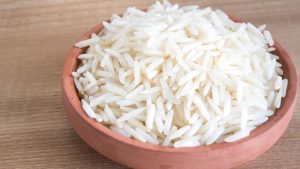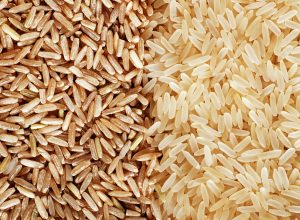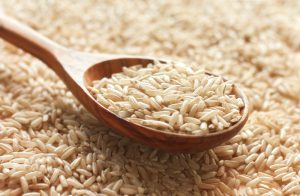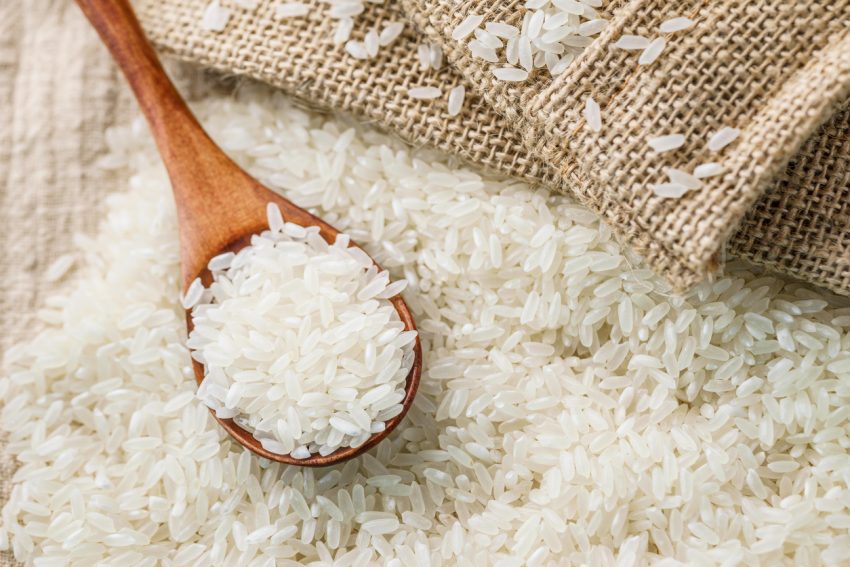Rice is a staple food for more than half of the world’s population. While there are over 110,000 cultivated varieties of rice, we typically group the grain into two categories: white and brown. Of the two, white rice is more widely consumed and preferred by many people. But you may be wondering about its healthfulness. Here’s the lowdown on white rice nutrition, how it compares to whole grain options, and healthy ways to enjoy any rice you choose.
First, some background on white rice
Rice is a grain. Brown rice is whole grain rice, with all parts of the grain remaining intact. With white rice, the grain is polished in a way that removes two parts—the bran and embryo—and leaves a starchy section called the endosperm. This process removes the majority of naturally occurring B vitamins, in addition to minerals, phytochemicals, and fiber. White rice labeled “enriched” means that B vitamins and iron have been added back, but only at a fraction of their original levels.
White rice nutrition
One cup of cooked white rice contains just over 200 calories, about 4 grams of protein, and 44 grams of carbohydrate with less than 1 gram as fiber. That’s the amount of carbs in about three slices of white bread. The vitamin and mineral content in unenriched white rice is fairly low. For example, the same sized portion of brown rice provides 78 mg of magnesium compared to 19 mg in white rice. The potassium content of white rice is 55 mg per cup cooked vs. 174 mg in brown. There are no nutrients higher in unenriched white rice as compared to whole grain. Brown rice also packs more fiber, at 3 grams per cup cooked.
White rice and diabetes
Several studies have assessed the connection between white rice consumption and type 2 diabetes. A 2020 study published in Diabetes Care looked at data from more than 130,000 people in 21 countries. The researchers found that higher consumption of white rice was associated with an increased risk of incident diabetes, though they pointed out that other studies have drawn different conclusions about white rice’s impact on diabetes risk. Still, scientists say that excess rice consumption may lead to post-meal spikes in blood sugar and, in turn, raise insulin levels. Over time, the latter may exhaust the pancreatic cells that secrete insulin and lead to diabetes.
White rice and resistant starch
Cooking and then cooling starches, including white rice, has been shown to increase the formation of a substance called resistant starch. Resistant starch is a unique kind of carbohydrate that’s been shown to naturally up the body’s fat-burning furnace. Like fiber, you can’t digest or absorb resistant starch, and when it reaches the large intestine, it gets fermented, which triggers the body to burn fat.
One study analyzed the resistant starch contents of freshly cooked white rice, cooked white rice cooled for 10 hours, and cooked white rice cooled for 24 hours and then reheated. The results showed that cooking upped resistant starch content. In addition, researchers assessed the impact of the three rice samples in 15 healthy adults. The consumption of both types of cooled rice resulted in significantly lower post-meal blood sugar responses compared to freshly cooked rice. If it’s possible, allow white rice to cool to room temperature before eating, or chill in the refrigerator for later use.

Bottom line
White rice is lower in nutrients compared to whole grain rice and doesn’t provide the protective benefits of whole grains, including a lower risk of heart disease and cancer. However, no single food makes or breaks the healthfulness of your overall eating pattern, and white rice is an important staple in many cultures. If you choose white rice over whole-grain, consider cooling it to blunt its impact on blood sugar. And pair white rice with nutrient-rich whole foods, including veggies, pulses (the umbrella term for beans, lentils, peas, and chickpeas), and nuts. Or, alternate white rice with other whole-grain options, including brown and wild rice, quinoa, oats, and millet.
And remember, rice can be incorporated into nearly any meal and used in both savory and sweet dishes. Add rice to a breakfast scramble, along with eggs or plant-based egg substitute, veggies, and herbs. Enjoy a grain bowl with rice, veggies, and lean protein; add it to stir-fries, soups, veggie chili; or serve as a side dish. Tasty rice treats include rice pudding, mango sticky rice, sweet coconut rice, and even toasted rice ice cream. Rice can also be used in place of oats as a hot or chilled breakfast porridge prepared with plant milk, fruit, nuts or seeds, and spices.
Cynthia Sass, MPH, RD, is Health’s contributing nutrition editor, a New York Times best-selling author, and a private practice performance nutritionist who has consulted for five professional sports teams.










Leave a Reply